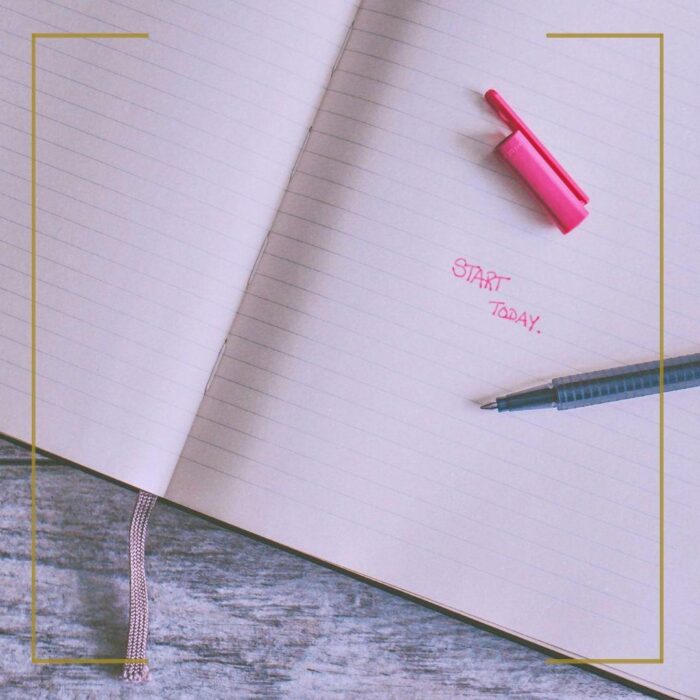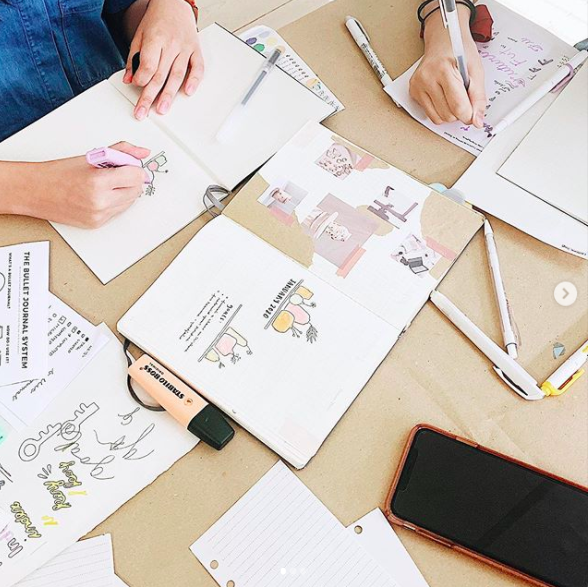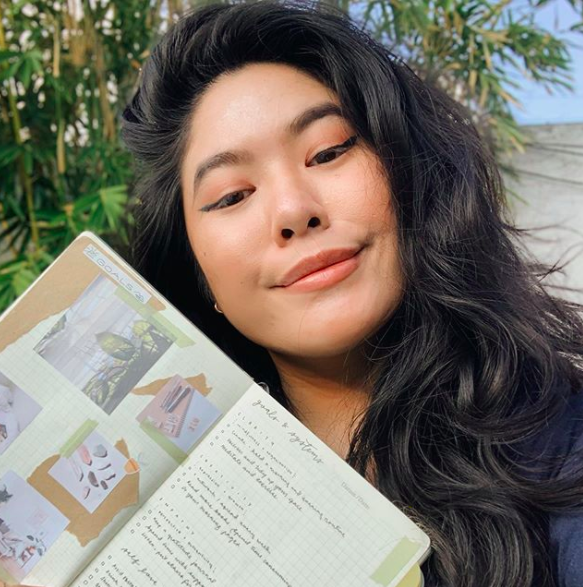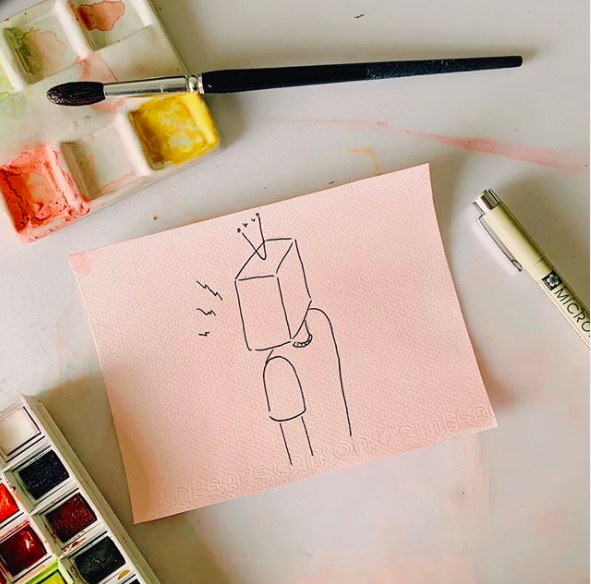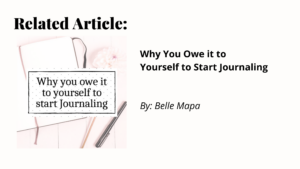By: Belle Mapa
I’ve been teaching both productivity and creative journaling workshops for three years now and it’s life-changing. As you journal, you learn a lot about yourself. And as a creative coach, I’ve gained so much insight from the people I’ve had the honor of teaching. But in every class, without fail, there will be students who come in with a disclaimer:
“Sorry, I can’t draw or write that well.” Or, “I’m not that creative.”
I’ve heard variations of this from both middle-aged adults and kids in middle school.
The usual response is, “No, just keep practicing and you’ll get better.” Or, “Everyone’s a creative, you just need to try.” But while these are good pieces of advice, they also feel like brick walls laid out in front of you -difficult to climb over. I’ve been there. You wind up at a standstill, a dead end. You give up, close the journal and indefinitely put that creative chapter of your life on pause.
If you feel like you’re one of those “Sorry, I’m not that creative” students, that’s okay. You’ll find your inner voice again. That’s why journaling is so therapeutic. As I always say: The blank page won’t judge you. It’s there to help you.
Journaling is your first baby step into rediscovering creativity
“Too often creativity is smothered rather than nurtured,” Maya Angelou once said.
We smother and silence our creative spirit, first when we are children, forced to believe being creative isn’t a worthwhile pursuit. And second, when we decide to pick the pen up again in our adulthood, forgetting that self-compassion is half of the process.
Often, we are too eager to become experts. Especially in an era that has acclimatized us against creativity and towards instant gratification—pardon my ok boomer moment. It is true that over time, the more you just keep at it, the better you get. But what they don’t explain is how to find yourself between the lines. That’s why we get impatient—we can neither see nor predict results.
Set goals for your creative pursuits. Think of it like a playdate with creativity. Do a drawing every week. Or a few lines a day. From there, you unknowingly turn playtime into practice, which then turns into progress.
Journaling reduces stress and can help you cope with anxiety in real-time
Often, it’s difficult to meditate when you’re anxious or distracted. If you’ve got a solid meditation or breathing practice, kudos! However, I’ve come into contact with individuals on the neurodivergent spectrum, people who, like me, struggle with mental illness. We all struggle with clearing our minds.
What if there are thoughts that just won’t go away? What if we start to panic?
That’s where my journal comes in. To catch what floats to the surface during my meditation practice. And little by little, it becomes easier. I call this creative meditation. It’s mindfulness on paper. Just focus on breathing while letting the excess thoughts out on a page or a post-it.
Start tracking your emotions and experiences through journaling. Take stock of your feelings and create a color palette that matches the common range of emotions you’d feel in a month. Name those emotions, and in a planner or your journal, track your moods every day. You’ll start to see patterns. And if you journal regularly, you’ll be able to see which events triggered those moods. Having this as your reference will help you surround yourself with people, places, and experiences that are good for you and feel good to you.
You learn to overcome perfectionism
I’ll never stop recommending The Artist’s Way by Julia Cameron to people who are seriously stuck in a creative rut. My mother passed it on to me as my grandmaman passed it on to her. When I said journaling saved my life, it’s because of this book. Particularly, the morning pages exercise—three pages of stream of consciousness writing done in the morning.
Cameron says in her book, “There is no wrong way to do Morning Pages—they are not high art. They are not even ‘writing.’” Literally just put your pen down, move your hand, and go. Let your perfectionism take a backseat. If you don’t know what to write, then just say “I don’t know what to write, blah, blah, blah” for three pages. By the end of the three pages, you’ll be surprised by how much thoughts crossed your mind and needed to be let out!
So grab a notebook, set a page goal, and get journaling. And it has to be words. Don’t cheat with drawings. Don’t weasel out because your grammar sucks or switch to digital because your penmanship is ugly. Write in Taglish. Write in broken sentences. Write thoughts that don’t complete themselves. That’s the point. Stop correcting yourself in real time. Overcome the inner editor. Fight them, win.
Look, I can go on about how journaling can change your life. And there are loads of resources out there, too, on how it helps you become a more grateful person, a more self-empowered, whole human being. I mean, just read Eat, Pray, Love or Becoming! But the whole point of touching the surface of journaling as your art therapy has more to do with really taking the time to know who you are. It’s giving your thoughts a space to exist. It’s finding your voice through all the noise around you. It’s understanding who you are and what matters to you, and seeing that for yourself – on paper!
In the end, it’s up to you to start. It’s up to you to listen and heed the call of your inner voice. What are they trying to express? Are you going to be that creative today?

